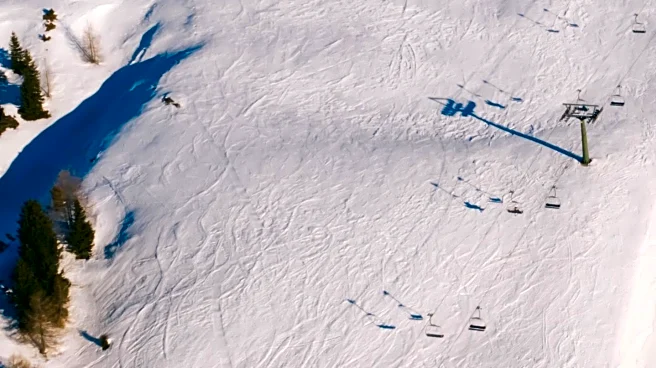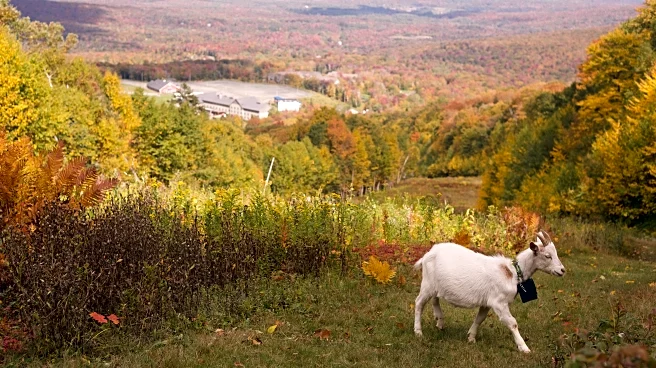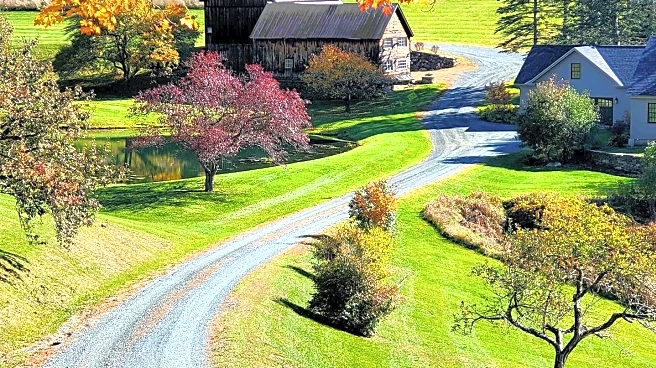What is the story about?
What's Happening?
Vermont ski areas, including Jay Peak, are employing goats and sheep to manage vegetation on their slopes. This initiative aims to reduce reliance on gas-powered mowers by using livestock to clear overgrown vegetation. The animals are equipped with special collars that help manage their movement and provide data to their owner, Adam Ricci of Cloud Brook Grazing. This method, known as 'goatscaping,' is not new and has been used in various locations for vegetation control. The project is part of a broader effort to mitigate climate change impacts and improve sustainability in ski resorts.
Why It's Important?
The use of livestock for landscaping at ski resorts represents a shift towards more sustainable practices in the industry. By reducing the carbon footprint associated with traditional mowing methods, this approach contributes to environmental conservation efforts. It also offers economic benefits, as the cost per acre is comparable to mechanical mowing. The initiative could serve as a model for other ski resorts, promoting eco-friendly practices and potentially influencing broader industry standards. Additionally, it enhances the visitor experience by introducing a unique and engaging element to the ski areas.
What's Next?
The success of this initiative at Jay Peak could lead to its expansion to other ski resorts. As the project develops, there may be opportunities to refine the model and address challenges such as the slower pace of livestock compared to mechanical methods. Stakeholders, including the Agritech Institute for Small Farms, are likely to continue supporting and facilitating collaborations that enhance sustainability in the industry. The ongoing evaluation of the project's impact on erosion control and water retention will be crucial in determining its long-term viability.
Beyond the Headlines
The use of livestock for slope maintenance raises ethical considerations regarding animal welfare and the balance between environmental benefits and potential impacts on the animals. As the practice gains traction, there may be discussions around the best practices for ensuring the well-being of the animals involved. Additionally, this initiative highlights the growing trend of integrating agricultural practices into non-traditional settings, which could lead to innovative solutions in other sectors.
AI Generated Content
Do you find this article useful?
















